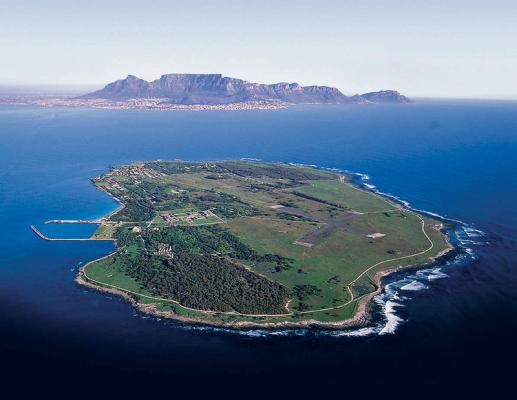

For nearly 400 years, Robben Island, about 12 kilometres from Cape Town, was a place of exile where rulers sent those they regarded as outcasts and troublemakers.
Robben Island was used at various times between the 17th and 20th centuries as a prison, a hospital for socially unacceptable groups and a military base. Its buildings, particularly those of the late 20th century such as the maximum security prison for political prisoners, witness the triumph of democracy and freedom over oppression and racism.
The author Lawrence Green described Robben Island as "The Island of Exiles". For centuries it was a remote inaccessible place. It was said that the Portuguese has put prisoners here in as early as 1525, but to date, no evidence has pointed to this occurrence.
Since 1997 Robben Island has been a museum acting as a focal point of South African heritage. Daily tours of about 4 hours long, including the two half-hour ferry rides are offered (weather permitting) from the V & A Waterfront in Cape Town.
In 1999 the island was declared a World Heritage Site.
During the apartheid years Robben Island was used to isolate opponents of apartheid and to crush their morale. Freedom fighters, like Nelson Mandela, spent more than a quarter of a century in prison for their beliefs.
On the road to the village you'll pass a square-towered church and old Sailboat cannons. Most of the buildings today, date back to the Second World War with 9.2 inch guns and bunkers bearing testimony to the armaments erected to defend Cape Town.
The main centre of Robben Island is located in a small village and mostly everything from milk to building materials had to be ferried over from Cape Town Harbour. Robben Island generate it's own electricity and obtains its water from nine boreholes.
Aside from the historical sites, artefacts and exhibits that can be experienced on the Island, Robben Island Museum has installed a number of long-term exhibits at its mainland sites. These are open to the public and free of charge.
Much has been done to restore the Robben Island's ecological haven to what it used to be centuries ago. In 1991 Robben Island was included in the SA natural heritage program and the northern parts of the island was declared a bird sanctuary. Buck, ostrich, and rabbits are also to be found on the island.
The Island is one of South Africas most important breeding localities for sea birds and is currently home to 8 500 breeding pairs of African Penguins the worlds second largest colony of this vulnerable species.
There has never been a case recorded of anyone swimming to freedom, yet it is possible as Robben Island is a starting point for many long distance swimmers today. Of the few escape attempts made, Harry (or Herry) a leading trader, managed to escape to Saldanha in a leaky sailboat.
Oliver Tambo, leader of the ANC, once said:
"The tragedy of Africa, in racial and political terms [has been] concentrated in the southern tip of the continent - in South Africa, Namibia, and, in a special sense, Robben Island."
Ferries depart at 9am, 11am,1pm and 3pm, weather permitting, from Nelson Mandela Gateway, at the V&A Waterfront in Cape Town.
You are advised to pre-book your tickets to avoid disappointment.
Accommodation with easy access to the starting point can be found in V & A Waterfront, Central Cape Town and Camps Bay or view all Cape Town Accommodation options.
Cape Town offers other Museums as well as a myriad of other Things to Do and places to see, whatever your tastes, inclinations or budget.




